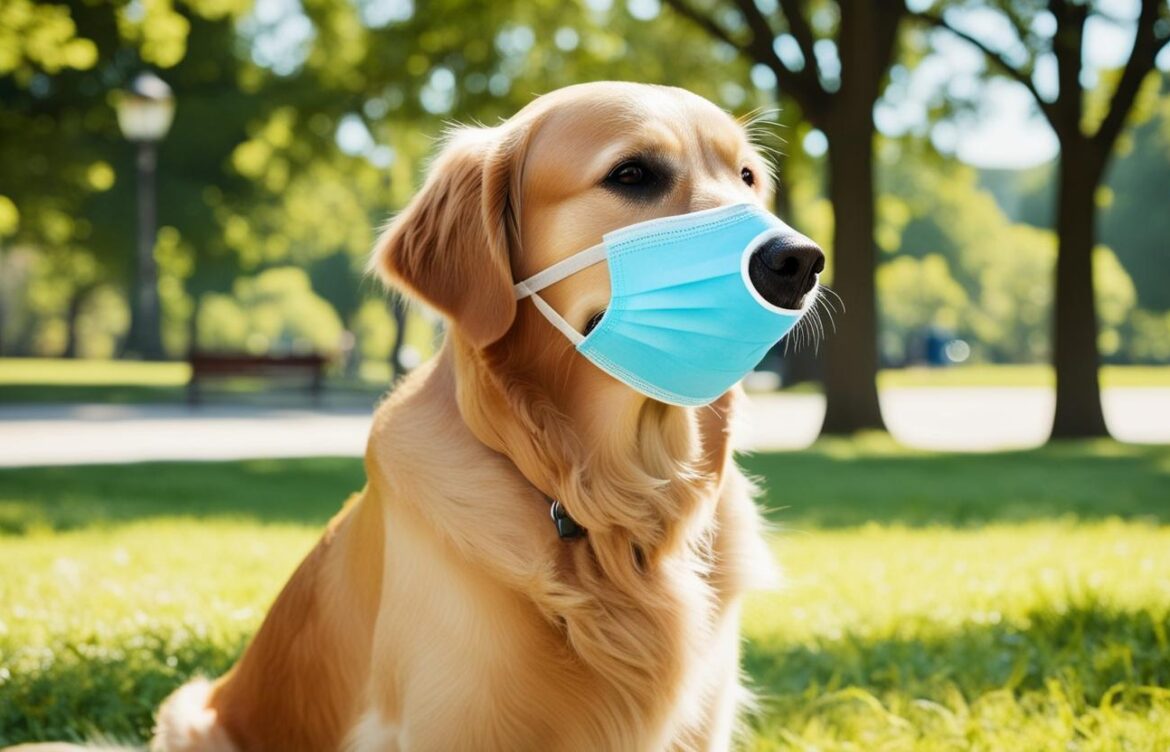
Air Quality Alert: Protecting Your Pets
When air quality deteriorates—due to wildfires, pollution, smog, or seasonal allergens—our first instinct is to protect our families. But there’s one group of beloved family members that often gets overlooked: our pets. Dogs and cats, like humans, are vulnerable to poor air quality and may suffer serious health effects if not protected properly.
As air quality alerts become more frequent due to climate change and environmental factors, it’s critical for pet owners to understand how to safeguard their furry companions. In this article, we’ll explore how air pollution affects pets, which animals are most at risk, how to recognize symptoms of air-related illnesses, and what proactive steps you can take to ensure their safety.
Understanding Air Quality and Its Impact
Air quality is measured using the Air Quality Index (AQI), which ranges from 0 (good) to 500 (hazardous). It reflects levels of:
- Particulate matter (PM2.5 and PM10)
- Ozone
- Carbon monoxide
- Sulfur dioxide
- Nitrogen dioxide
While these pollutants harm everyone, pets may be more susceptible due to their size, behavior, and biology.
Why Pets Are Vulnerable to Poor Air Quality
Pets often breathe closer to the ground, where pollutant concentrations can be higher. They also explore the world through their noses, making them directly exposed to airborne toxins. Here’s why they’re especially at risk:
1. Higher Respiratory Rate
Dogs and cats breathe faster than humans, especially during physical activity. This increases the volume of air—and pollutants—they inhale.
2. Inability to Communicate Symptoms
Unlike humans who can articulate discomfort, pets can’t tell us when they’re struggling to breathe or feeling ill. Symptoms often go unnoticed until serious.
3. Outdoor Exposure
Many pets spend part of their day outdoors. Dogs especially may be walked during high-pollution hours, unknowingly inhaling harmful substances.
4. Small Body Size
Toxins affect smaller bodies more significantly. Puppies, kittens, and small breeds are particularly vulnerable.
Health Effects of Poor Air Quality on Pets
Just like humans, pets exposed to poor air can suffer from both short-term irritation and long-term respiratory issues.
Short-Term Symptoms:
- Coughing or wheezing
- Labored breathing or panting
- Nasal discharge
- Sneezing or watery eyes
- Reduced appetite
- Fatigue or lethargy
Long-Term Effects:
- Asthma or chronic bronchitis
- Heart disease (from prolonged exposure to PM2.5)
- Worsened symptoms in pets with pre-existing respiratory conditions
- Reduced lung function over time
High-Risk Groups:
- Brachycephalic breeds (short-nosed dogs/cats like Pugs, Bulldogs, Persians)
- Senior pets
- Pets with heart or lung disease
- Very young animals (puppies, kittens)
- Pets with compromised immune systems
Understanding PM2.5 and Pets
PM2.5 refers to fine inhalable particles with diameters of 2.5 micrometers or smaller. These particles penetrate deep into the lungs and enter the bloodstream, causing inflammation and organ damage.
Pets that inhale PM2.5 frequently are at risk for:
- Chronic inflammation
- Lung scarring
- Cardiopulmonary stress
During wildfire seasons or smog events, PM2.5 levels can spike, triggering air quality alerts in many regions.
How to Protect Your Pets During Poor Air Quality Events
The best defense is a combination of environmental control, behavioral adjustments, and medical readiness. Below are actionable strategies to protect your dogs and cats:
1. Check the AQI Daily
Use apps like:
- AirVisual
- Plume Labs
- AirNow
- EPA’s AQI website
Get into the habit of checking your local AQI just like you would the weather. If AQI is over 100:
- Limit pet activity outdoors
- Prepare an indoor safe zone
- Consider rescheduling walks and playtime
2. Limit Outdoor Exposure
If the air quality is poor:
- Keep walks brief and close to home
- Avoid exercise between 10 a.m. and 5 p.m. (peak pollution hours)
- Let dogs out in short spurts only for bathroom breaks
- Keep cats indoors entirely
3. Create an Indoor Clean-Air Environment
Make your home a haven for your pets:
- Use HEPA air purifiers in rooms where pets spend the most time
- Seal windows and doors to prevent smoke or outdoor pollutants from entering
- Vacuum and dust frequently to reduce indoor allergens
- Avoid using aerosols or scented candles, which can worsen indoor air quality
4. Adjust Physical Activity
During an air quality alert, reduce exertion:
- Skip the fetch session or long walks
- Engage your pet mentally instead—through puzzles, enrichment toys, or gentle training
- Use indoor games like hide-and-seek or food trails
Mental stimulation can burn energy and reduce stress without affecting the lungs.
5. Keep Them Hydrated
Clean, fresh water helps flush toxins from the body and keeps mucous membranes moist—an important defense against respiratory irritants.
- Add ice cubes or flavor enhancers (like bone broth) to encourage drinking
- For cats, consider pet water fountains, which increase interest in drinking
6. Monitor for Symptoms
During smoke events or AQI spikes, observe your pets closely:
- Are they panting more than usual indoors?
- Do they seem sluggish or uninterested in food?
- Are their eyes irritated or red?
Any of these could indicate the need for a vet check-up—especially if your pet has preexisting respiratory or cardiac issues.
When to Call the Vet
Seek veterinary attention if your pet shows:
- Persistent cough or wheezing
- Extreme lethargy
- Bluish gums or tongue
- Nasal flaring or distressed breathing
- Vomiting or collapse
Some symptoms mimic heatstroke or poisoning, but poor air quality can trigger similar crises, particularly in vulnerable pets.
Special Care for Senior Pets and Animals with Chronic Conditions
Senior dogs and cats often have reduced lung function or conditions like:
- Heart murmurs
- Tracheal collapse
- Chronic bronchitis
- Asthma or allergies
- Immunodeficiencies
These pets require extra precautions:
- Double up on air filtration in their living area
- Limit movement even more during alerts
- Avoid exposure altogether if AQI is over 150
Breed-Specific Considerations
Brachycephalic Dogs:
Breeds like Bulldogs, Boxers, and Pekingese have short nasal passages, which makes breathing under stress far more difficult.
Sighthounds and Large Breeds:
Their large lung capacity makes them capable of deep exertion—but also vulnerable to over-inhalation of toxins during exercise.
Cats with Asthma:
These felines may need inhaler medication (Flovent or Albuterol) during poor air quality days. Always consult your vet for a treatment plan.
Should You Use Pet Masks?
While there are pet-specific masks available, they are:
- Often uncomfortable
- Not universally effective
- Difficult to fit properly
- Stressful for most pets to wear
Focus instead on minimizing exposure and maintaining indoor air quality. Pet masks may be suitable in rare circumstances under veterinary guidance but should not be your first line of defense.
Protecting Outdoor Pets and Strays
For pets that live or spend significant time outdoors:
- Bring them indoors during poor air quality days
- Provide covered, ventilated shelters
- Add indoor enrichment to transition them inside more smoothly
- For feral cats or colony animals, set up filtered feeding stations or insulated boxes with limited airflow
Even semi-feral pets can be trained or enticed indoors with persistence and positive reinforcement.
Long-Term Prevention and Preparedness
1. Create an Emergency Air Quality Kit
Include:
- Extra water and collapsible bowls
- Respiratory medications or prescriptions
- A pet-safe HEPA filter or portable air purifier
- Soft cloths for cleaning fur or eyes
- Your vet’s emergency contact info
2. Keep Up With Grooming
Pets with long coats or outdoor habits may bring in soot, pollen, or fine dust. Wipe paws, brush coats, and clean around the eyes after any outdoor time.
3. Plant an Air-Purifying Indoor Garden
Pet-safe plants like:
- Spider plants
- Areca palms
- Bamboo palms
- Boston ferns
These help clean indoor air—but check toxicity before adding any new greenery.
Environmental Advocacy for Pet Health
Ultimately, air quality is an environmental issue that affects pets, humans, and wildlife alike. As a pet parent, you can:
- Support local clean air initiatives
- Use eco-friendly transportation
- Reduce use of home chemicals and pesticides
- Speak out during wildfire season and urban pollution events
By taking action, you’re not only protecting your pets—you’re contributing to a healthier planet for all species.
Educate Others in Your Community
- Share AQI resources with fellow pet parents
- Encourage local shelters to post air quality tips
- Help pet boarding services implement air quality protocols
The more awareness we raise, the more pets we protect—especially in vulnerable populations like rescues, shelter animals, or strays.
Image Designed Using Canva
